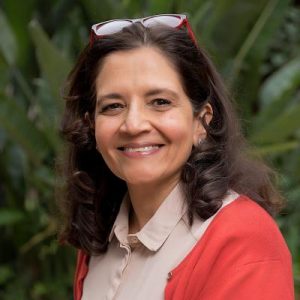
As the critical role of trees in addressing the climate, biodiversity, and food crises becomes increasingly clear, many public and private actors have responded by trying to get as many seedlings in the ground as possible.
It’s an understandable reaction: these crises are urgent, and international agreements like the Bonn Challenge – a global goal to bring 350 million hectares of degraded and deforested land into restoration by 2030 – seek to spur speedy action over large scales.
Yet while such moves are understandable, they’re often – unfortunately – counter-productive, or at least sub-optimal. In many cases, the wrong types of trees are being planted in the wrong places.
For instance, if the seeds and seedlings are poor quality or unsuited to their planting sites, survival rates may be low and efforts wasted. And, if we do not plant trees that are purpose-matched for local communities, they may not be well tended into the future and thus may not realize the purposes for which they were planted.
Insufficient diversity is another challenge – I have seen so many planting projects relying on a small number of exotic species in their work, for which the seeds and seedlings are more available. But these trees frequently don’t offer the ecosystem, carbon and livelihood benefits of diverse native forest. Poorly-chosen exotic species can also become invasive and impact negatively on native ecosystems. We need to, and can, do better than this.
Careful planning (that takes into account the changing climate) and close collaboration with local communities are, of course, important for rectifying this situation. But as planting projects increasingly adopt these approaches, another challenge has emerged: how to actually source diverse, high-quality native tree seeds and seedlings at the volume and speed at which they are required.
To begin to address this bottleneck, Germany’s International Climate Initiative (IKI) is funding the new Right Tree in the Right Place project (RTRP-Seed), with a particular focus on improving native tree species’ seed and seedling supply in sub-Saharan Africa.

Steffi Lemke, Germany’s Minister of the Environment, Nature Conservation and Nuclear Safety (left) and Éliane Ubalijoro, CIFOR-ICRAF’s CEO, at the RTRP-Seed launch event in Nairobi, Kenya. Photo by Felix Odhiambo/CIFOR-ICRAF
The geographic focus is strategic: Africa’s trees are facing a serious crises. The continent’s forests are being lost at alarming rates, and native tree species are disappearing rapidly as part of this, too. We must act fast to conserve African native tree species, and make the most of their largely-untapped and underexplored potential for biodiversity, climate mitigation and adaptation, culture and livelihoods, and beyond.
Launched on 1st March this year, the project primarily operates in Ethiopia, Kenya, Rwanda, and Uganda, with some activities also planned in Burkina Faso. All of these countries have high-level policies in support of forest landscape restoration involving methods such as agroforestry – and a need to translate these into more effective action.
Working closely with national partners, RTRP-Seed will focus on several key areas. Building platforms for learning and partnerships, and supporting the development of the right policies and institutional environments, are particularly critical measures, as previous work has shown that a well-functioning tree seed and seedling sector requires efficient linkages between public and private stakeholders. Our partners at the Global Landscapes Forum (GLF) will leverage their expertise in building platforms and networks to support these developments.
The project will also directly build capacity in native tree species seed supply (drawing on the strengths of our partner Botanic Gardens Conservation International), and will introduce new business models for tree nurseries supplying native tree seedlings with the support of Unique Land Use GmbH.
Lessons from the work in these countries will then be scaled up to the whole of sub-Saharan Africa through open digital learning and transformative partnership platforms. This will support the African Forest Landscape Restoration Initiative (AFR100), a country-led effort to bring 100 million hectares of land in Africa into restoration by 2030, in line with the global Bonn Challenge.
The task of enhancing appropriate seed and seedling supplies to match national restoration ambitions, align with local community aspirations, and serve ecosystems well in a changing climate is vast, complex – and necessary. I’m delighted to be a part of it.
Ramni Jamnadass is a principal scientist at the Center for International Forestry Research and World Agroforestry (CIFOR-ICRAF) in Nairobi, Kenya, where she is part of its global research theme on Biodiversity and Tree Genetic Resources. For more information on RTRP-Seed, please contact her at r.jamnadass@cifor-icraf.org.
We want you to share Forests News content, which is licensed under Creative Commons Attribution-NonCommercial-ShareAlike 4.0 International (CC BY-NC-SA 4.0). This means you are free to redistribute our material for non-commercial purposes. All we ask is that you give Forests News appropriate credit and link to the original Forests News content, indicate if changes were made, and distribute your contributions under the same Creative Commons license. You must notify Forests News if you repost, reprint or reuse our materials by contacting forestsnews@cifor-icraf.org.











